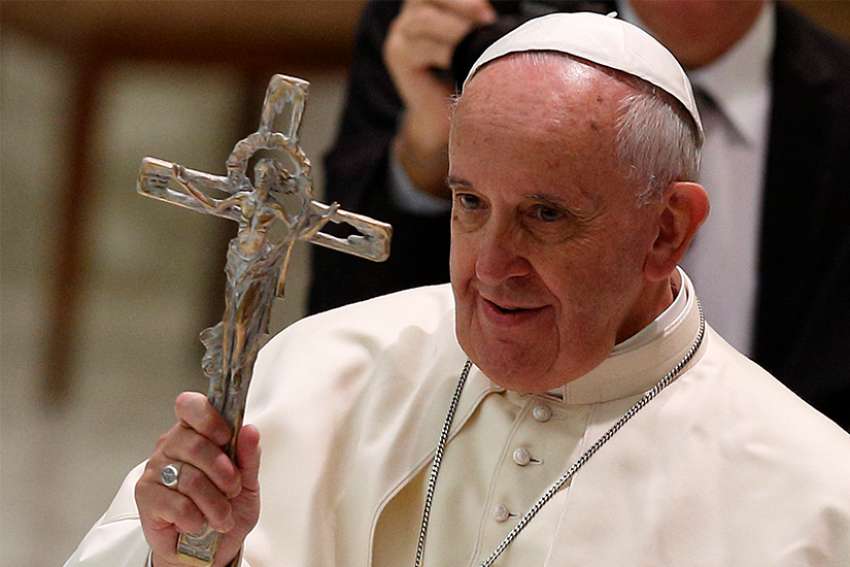“Today’s Gospel invites us to turn our gaze to the crucifix, which is not an ornamental object or clothing accessory – sometimes abused! – but a religious sign to be contemplated and understood,” the Pope said March 18.
“The image of Jesus crucified reveals the mystery of the death of the Son of God as the supreme act of love, the source of life and salvation for humanity of all times. In his wounds we have been healed.”
Pope Francis addressed around 20,000 people gathered in St. Peter’s Square for the Sunday Angelus. Adding a few comments off-the-cuff, he asked people how they look at a crucifix: as something to hang on a wall or really to contemplate the wounds of Christ?
Think to yourself, he said:
“How do I look at the crucifix? Like a work of art, to see if it is beautiful or not beautiful? Or do I look inside, within the wounds of Jesus, to his heart? Do I look at the mystery of God destroyed unto death, like a slave, like a criminal?”
The Pope suggested a beautiful practical devotion for people to make: To look at a crucifix and pray one Our Father for each of the five wounds of Christ.
“When we pray that Our Father, we try to enter through the wounds of Jesus [all the way to the] inside… right to his heart. And there we will learn the great wisdom of the mystery of Christ, the great wisdom of the cross,” he said.
Francis also reflected on the words of Jesus in the day’s Gospel passage from John, where he says: “Amen, amen, I say to you, unless a grain of wheat falls to the ground and dies, it remains just a grain of wheat but if it dies, it produces much fruit.”
Here, Jesus compares himself the grain of wheat which “rotting in the earth generates new life,” he said. “With the Incarnation, Jesus came to earth; but this is not enough: He must also die, to redeem men from the slavery of sin and give them a new life reconciled in love.”
This new life is accomplished in Christ, but “must also be realized in us his disciples,” he noted. We must lose our life in this world in order to gain eternal life in the next.
What does it mean to lose your life, to be the grain of wheat? he asked. “It means thinking less about oneself, about personal interests, and knowing how to ‘see’ and meet the needs of our neighbor, especially the least ones.”
He said that our communities must be based on this foundation, growing in mutual acceptance, joy, and works of love, especially for those who suffer in body and in spirit.
We must think: “I want to see Jesus, but to see him from within,” he said. “Enter his wounds and contemplate that love of his heart for you… for me, for everyone.”


